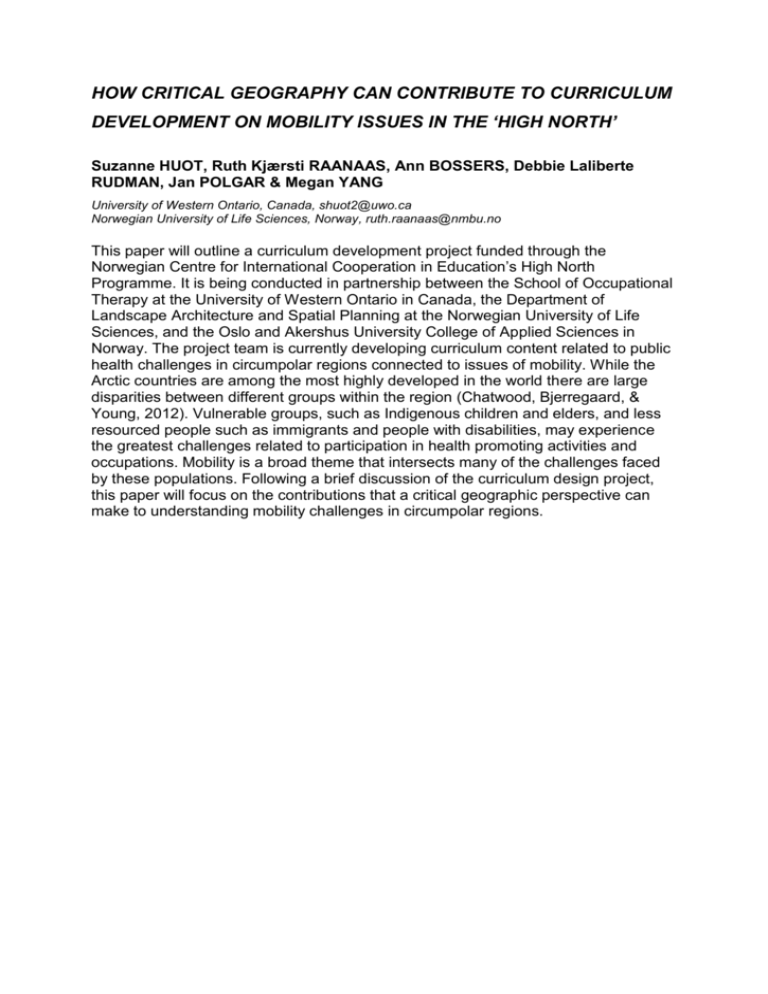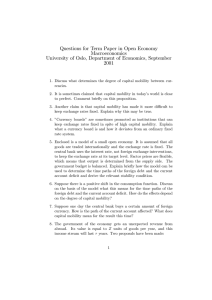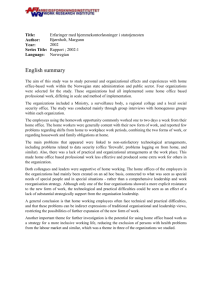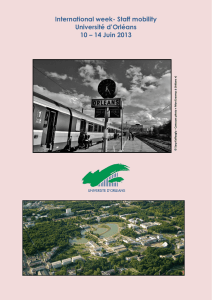HOW CRITICAL GEOGRAPHY CAN CONTRIBUTE TO
advertisement

HOW CRITICAL GEOGRAPHY CAN CONTRIBUTE TO CURRICULUM DEVELOPMENT ON MOBILITY ISSUES IN THE ‘HIGH NORTH’ Suzanne HUOT, Ruth Kjærsti RAANAAS, Ann BOSSERS, Debbie Laliberte RUDMAN, Jan POLGAR & Megan YANG University of Western Ontario, Canada, shuot2@uwo.ca Norwegian University of Life Sciences, Norway, ruth.raanaas@nmbu.no This paper will outline a curriculum development project funded through the Norwegian Centre for International Cooperation in Education’s High North Programme. It is being conducted in partnership between the School of Occupational Therapy at the University of Western Ontario in Canada, the Department of Landscape Architecture and Spatial Planning at the Norwegian University of Life Sciences, and the Oslo and Akershus University College of Applied Sciences in Norway. The project team is currently developing curriculum content related to public health challenges in circumpolar regions connected to issues of mobility. While the Arctic countries are among the most highly developed in the world there are large disparities between different groups within the region (Chatwood, Bjerregaard, & Young, 2012). Vulnerable groups, such as Indigenous children and elders, and less resourced people such as immigrants and people with disabilities, may experience the greatest challenges related to participation in health promoting activities and occupations. Mobility is a broad theme that intersects many of the challenges faced by these populations. Following a brief discussion of the curriculum design project, this paper will focus on the contributions that a critical geographic perspective can make to understanding mobility challenges in circumpolar regions.







![CHEER Seminar Promo: 2nov2015 [DOC 142.50KB]](http://s3.studylib.net/store/data/007520556_1-22ae8f83ff74a912c459b95ac2c7015c-300x300.png)



